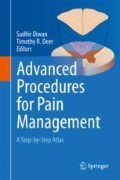Abstract
Alpha-2-macroglobulin (A2M) is a major plasma glycoprotein best known for its ability to inhibit a broad spectrum of inflammatory mediators, such as metalloproteases and inflammatory cytokines by a unique “bait-and-trap” method. A2M has emerged as a unique potential treatment for cartilage-based pathology and inflammatory arthritides. A2M can be concentrated from an autologous source and injected into diseased tissue to enhance healing, prevent further degradation, and protect normal tissue. A2M not only inhibits the associated inflammatory cascade, but also disrupts the catabolic process of cartilage degeneration. Any pathology that is protease-mediated may benefit from A2M therapy. The half-life is quite long, so successful treatment can result in months of pain relief. Autologous concentrated A2M from plasma is currently used successfully to treat various painful arthritides, including mild to moderate osteoarthritis, post-traumatic osteoarthritis, enthesopathies, and spinal discogenic pain. Recent work has shown that recombinant A2M may be able to enhance cartilage regeneration. The discovery of A2M as the body’s own healing mechanism, with anti-inflammatory and disease-modifying potential, offers great promise.
References
Bedi A, Kovacevic D, Hettrich C, Gulotta LV, Ehteshami JR, Warren RF, Rodeo SA. The effect of matrix metalloproteinase inhibition on tendon-to-bone healing in a rotator cuff repair model. J Shoulder Elb Surg. 2010;19:384–91.
Demirag B, Sarisozen B, Ozer O, Kaplan T, Ozturk C. Enhancement of tendon-bone healing of anterior cruciate ligament grafts by blockage of matrix metalloproteinases. J Bone Joint Surg Am. 2005;87:2401–10.
Scuderi GJ, Cuellar JM, Montesano PX. Intradiscal injection of autologous alpha-2-macroglobulin (A2M) concentrate alleviates back pain in FAC-positive patients. ISASS 2016, Abstract 202. http://www.isass.org/m/h/03_2029.html.
Cawston TE, McLaughlin P, Hazleman BL. Paired serum and synovial fluid values of alpha 2-macroglobulin and TIMP in rheumatoid arthritis. Br J Rheumatol. 1987;26:354–8.
Ades EW, Hinson A, Chapuis-Cellier C, Arnaud P. Modulation of the immune response by plasma protease inhibitors. I. Alpha 2-macroglobulin and alpha 1-antitrypsin inhibit natural killing and antibody-dependent cell-mediated cytotoxicity. Scand J Immunol. 1982;15:109–13.
Fichter M, Körner U, Schömburg J, Jennings L, Cole AA, Mollenhauer J. Collagen degradation products modulate matrix metalloproteinase expression in cultured articular chondrocytes. J Orthop Res. 2006;24:63–70.
Lefebvre V, Peeters-Joris C, Vaes G. Modulation by interleukin 1 and tumor necrosis factor alpha of production of collagenase, tissue inhibitor of metalloproteinases and collagen types in differentiated and dedifferentiated articular chondrocytes. Biochim Biophys Acta. 1990;1052:366–78.
Saklatvala J. Tumour necrosis factor alpha stimulates resorption and inhibits synthesis of proteoglycan in cartilage. Nature. 1986;322:547–9.
Goldring MB, Fukuo K, Birkhead JR, Dudek E, Sandell LJ. Transcriptional suppression by interleukin-1 and interferon-gamma of type II collagen gene expression in human chondrocytes. J Cell Biochem. 1994;54:85–99.
Stöve J, Huch K, Günther KP, Scharf HP. Interleukin-1beta induces different gene expression of stromelysin, aggrecan and tumor-necrosis-factor-stimulated gene 6 in human osteoarthritic chondrocytes in vitro. Pathobiology. 2000;68:144–9.
Glasson SS, Askew R, Sheppard B, Carito B, Blanchet T, Ma HL, et al. Deletion of active ADAMTS5 prevents cartilage degradation in a murine model of osteoarthritis. Nature. 2005;434:644–8. Erratum in: Nature 2007;446:102
Rogerson FM, Chung YM, Deutscher ME, Last K, Fosang AJ. Cytokine-induced increases in ADAMTS-4 messenger RNA expression do not lead to increased aggrecanase activity in ADAMTS-5-deficient mice. Arthritis Rheum. 2010;62:3365–73.
Tortorella MD, Malfait AM, Deccico C, Arner E. The role of ADAM-TS4 (aggrecanase-1) and ADAM-TS5 (aggrecanase-2) in a model of cartilage degradation. Osteoarthritis Cartilage. 2001;9:539–52. Erratum in: Osteoarthritis Cartilage 2002;10:82
Miller RE, Lu Y, Tortorella MD, Malfait AM. Genetically engineered mouse models reveal the importance of proteases as osteoarthritis drug targets. Curr Rheumatol Rep. 2013;15:350.
Homandberg GA, Wen C, Hui F. Cartilage damaging activities of fibronectin fragments derived from cartilage and synovial fluid. Osteoarthr Cartil. 1998;6:231–44.
Scuderi GJ, Woolf N, Dent K, Golish SR, Cuellar JM, Cuellar VG, et al. Identification of a complex between fibronectin and aggrecan G3 domain in synovial fluid of patients with painful meniscal pathology. Clin Biochem. 2010;43:808–14.
Scuderi GJ, Golish SR, Cook FF, Cuellar JM, Bowser RP, Hanna LS. Identification of a novel fibronectin-aggrecan complex in the synovial fluid of knees with painful meniscal injury. J Bone Joint Surg Am. 2011;93:336–40.
Scuderi GJ, Cuellar JM, Cuellar VG, Yeomans DC, Carragee EJ, Angst MS. Epidural interferon gamma-immunoreactivity: a biomarker for lumbar nerve root irritation. Spine (Phila Pa 1976). 2009;34:2311–7.
Golish SR, Hanna LS, Bowser RP, Montesano PX, Carragee EJ, Scuderi GJ. Outcome of lumbar epidural steroid injection is predicted by assay of a complex of fibronectin and aggrecan from epidural lavage. Spine (Phila Pa 1976). 2011;36:1464–9.
Meszaros E, Malemud CJ. Prospects for treating osteoarthritis: enzyme-protein interactions regulating matrix metalloproteinase activity. Ther Adv Chronic Dis. 2012;3:219–29.
Rothenberg ML, Nelson AR, Hande KR. New drugs on the horizon: matrix metalloproteinase inhibitors. Stem Cells. 1999;17:237–40.
Amar S, Fields GB. Potential clinical implications of recent matrix metalloproteinase inhibitor design strategies. Expert Rev Proteomics. 2015;12:445–7.
Jotanovic Z, Mihelic R, Sestan B, Dembic Z. Role of interleukin-1 inhibitors in osteoarthritis: an evidence-based review. Drugs Aging. 2012;29:343–58.
Wang S, Wei X, Zhou J, Zhang J, Li K, Chen Q, et al. Identification of α2-macroglobulin as a master inhibitor of cartilage-degrading factors that attenuates the progression of posttraumatic osteoarthritis. Arthritis Rheumatol. 2014;66:1843–53.
Author information
Authors and Affiliations
Corresponding author
Editor information
Editors and Affiliations
Rights and permissions
Copyright information
© 2018 Springer International Publishing AG, part of Springer Nature
About this chapter
Cite this chapter
Scuderi, G.J., Hanna, L. (2018). Alpha-2-Macroglobulin: Protease Inhibitor Treatment (PRP Variant). In: Diwan, S., Deer, T. (eds) Advanced Procedures for Pain Management. Springer, Cham. https://doi.org/10.1007/978-3-319-68841-1_39
Download citation
DOI: https://doi.org/10.1007/978-3-319-68841-1_39
Published:
Publisher Name: Springer, Cham
Print ISBN: 978-3-319-68839-8
Online ISBN: 978-3-319-68841-1
eBook Packages: MedicineMedicine (R0)

